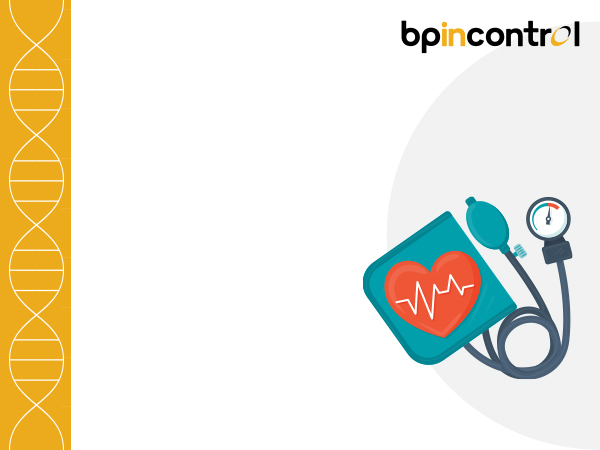Low Blood Sodium (Hyponatremia): Symptoms, Importance, Causes and Treatment

Table of Contents
It is well known that having excess sodium in the bloodstream causes high blood pressure or hypertension. But the opposite is also true. Having insufficient sodium in the body is also dangerous and can cause a condition called hyponatremia where there is an imbalance in the water and sodium levels in the body. Either there is too much water or inadequate sodium in the body.
What Is Sodium And Why Is It Important To Our Body?
Sodium is a mineral that’s essential for life. It’s regulated in the body by the kidneys and it helps control the body’s fluid balance in and around the blood cells. It plays a major role in maintaining blood volume and blood pressure by attracting and holding water. Sodium is also important in cellular osmotic pressure (the passage of fluids in and out of the cells), in transmitting nerve impulses and for muscle function. In addition, it also helps maintain stable blood pressure levels.
Normally, the sodium level in the body should be between 135 and 145 milliequivalents per litre (mEq/L). When the sodium level goes below 135 mEq/L that condition is referred to as Hyponatremia.
What Are Low Sodium Symptoms (Hyponatremia)?
Low sodium symptoms vary from case to case. If the person has suffered a gradual decrease in sodium levels, then there may be no symptoms. A sudden drop in the sodium levels is dangerous and a serious medical condition and may result in loss of consciousness, seizures and even coma.
Some Common Low Sodium/Hyponatremia Symptoms May Include:
- Weakness
- Nausea and vomiting
- Headache
- Confusion
- Loss of energy, drowsiness and fatigue
- Restlessness and irritability
- Muscle weakness, spasms or cramps
What Causes Low Blood Sodium Levels?
Low blood sodium is caused by many factors such as loss of too much water and electrolytes from the body. In addition, some other medical conditions of major organs such as heart, liver, kidneys may also be some of the causes of hyponatremia.
Some of the known causes of low sodium levels include:
- Diarrhea or severe vomiting
- Diuretics or water pills
- Dehydration
- Kidney problems or even kidney failure
- Liver disease
- Congestive heart failure or other heart troubles
- Adrenal gland disorders such as Addison’s disease (this condition affects the adrenal glands’ ability to regulate the balance of sodium, potassium, and water in the body)
- Thyroid problems such as hypothyroidism
- Primary polydipsia, a condition in which excess thirst makes the person drink too much
- SIADH(Syndrome of Inappropriate Antidiuretic Hormone), which makes the body retain water
- Diabetes insipidus,a rare condition in which the body doesn’t make the antidiuretic hormone
- Using ecstasy drug, which is an amphetamine, causes a thirst stimulation and thus a substantial increase in water intake as well as inappropriate secretion of ADH (an antidiuretic hormone that helps the kidneys manage the amount of water in the body) thus causing hyponatremia
Who Is Most At Risk For Low Sodium Levels?
A person who is at an increased risk of low sodium levels must make sure that they are careful about taking in adequate electrolytes and water. There are some factors that are responsible for increasing the risk of low sodium levels in a person’s body such as:
- Age
- Being a top-level athlete
- Antidepressant usage
- Diuretic usage
- Low sodium diet
- Medical conditions such as kidney disease, heart problems, SIADH or some other conditions
How To Detect Low Sodium Levels In The Blood?
A blood test known as a basic metabolic panel can detect low sodium levels. The test checks the amount of electrolytes and minerals in the blood and is helpful for detecting low sodium levels in a patient without any low sodium symptoms.
If the results of this basic metabolic panel are abnormal, then a urine test is done to check the sodium levels in the urine and can be helpful to the doctors for finding out what causes low sodium levels in the patient
After Studying The Results Of Both Tests:
- If the blood sodium levels are low but the urine sodium levels are high, then the patient is losing too much sodium
- Low sodium levels in both the blood and urine mean the patient’s body is not taking in enough sodium and there may also be too much water in their body
Low Sodium Levels Treatment:
If a person has low sodium levels, what are the treatments available to them? Well, the cures may vary depending on the patient’s condition but some known treatments include :
- Less intake of fluids
- Ensuring the correct dosage of diuretics
- Taking medicines for headaches, nausea,
- Using an IV (intravenous) sodium solution
Tips to Prevent Low Blood Sodium Levels
- Maintain water and electrolytes balance
- If you are a sportsperson, drink the correct amount of water (or even electrolyte drinks that include sodium) while training
- Women should try and drink 2.2 liters of water daily
- Men should drink 3 liters of water a day
- But drink no more than 1 litre of water per hour
- Keep a watch on the urine colour – if the urine is pale yellow or clear then the body is adequately hydrated
- Increse the fluid intake in case you are pregnant, vomiting, have diarrhea, have fever, are at a higher altitude, in a warm locartion
FAQs
1. How do you fix low sodium?
Similar to low sodium symptoms, cures also vary depending on the patient’s condition. Some of them include: cutting back on fluid intake, adjusting the dosage of diuretics, taking medications for symptoms such as headaches, nausea, seizures, and infusing an intravenous (IV) sodium solution.
2. What causes sodium levels to drop?
Drop-in sodium levels are caused by many factors, such as losing too much water and electrolytes from the body. Some of the leading causes include diarrhea, taking antidepressants, dehydration, hypothyroidism, heart problems, and primary polydipsia (a condition in which excess thirst makes you drink too much water).
3. What happens when your sodium level is too low?
Signs and symptoms of hyponatremia ( sodium level goes below 135mEq/L) can include altered personality, lethargy, and confusion. Symptoms are seizures and coma. Low sodium symptoms are common in elders, especially those hospitalized or living in long-term care facilities.
4. How do you test for low sodium levels?
A blood test, a basic metabolic panel, can help your doctor check for low sodium levels. This tests the number of electrolytes and minerals in your body without any low sodium symptoms.
Disclaimer
The information contained in this article is to educate, spread awareness in relation to hypertension and other diseases to the public at large. The contents of this article are created and developed by BPinControl.in through its authors, which has necessary, authorisations, license, approvals, permits etc to allow usage of this articles on The Website. The views and opinions expressed in this article are views, opinions of the respective authors and are independently endorsed by doctors. Although great care has been taken in compiling and checking the information in this article, The Website shall not be responsible, or in any way liable for any errors, omissions or inaccuracies in this article whether arising from negligence or otherwise, or for any consequences arising therefrom. The content of this article is not a substitute for any medical advice. The Website shall not be held responsible or liable for any consequence arising out of reliance on the information provided in the article.


Comments (4)
Parthik
Can’t believe there is so much to low blood sodium
Kinjal
Great blog! Thanks for publishing it.
Samya
The prevention guidelines are nice.
Abhimanu
Good to read
Add your comment